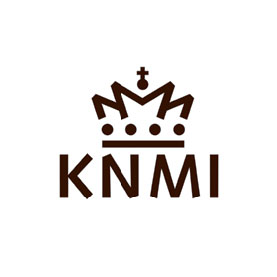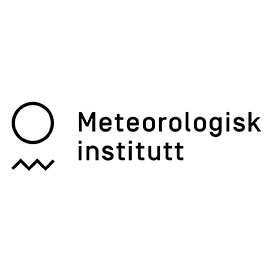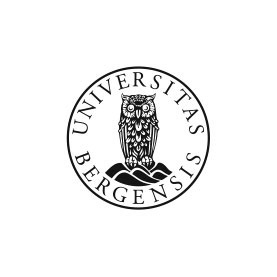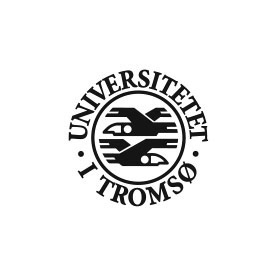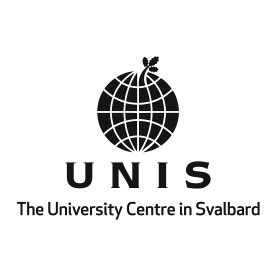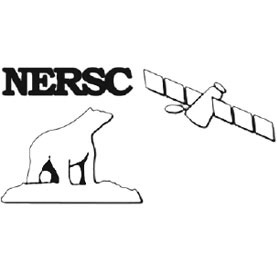Bedre værvarsler i Arktis
Klimaendringer fører til økt aktivitet i Arktis, men røffe værforhold kan gjøre det risikofylt å ferdes i området. Det viktigste målet til Alertness-prosjektet er å utvikle verdensledende, pålitelige og nøyaktige værvarsler i Arktis. Dette vil være til nytte for maritime bedrifter, næringsliv og samfunn.
Forskning fra Alertness vil gi bedre metoder og verktøy for å øke vår kunnskap om værforhold i Arktis, slik at vi kan gi bedre varsler av potensielle farer opp til tre dager frem i tid.
Vi bygger på prinsippet science-for-service, som brukes av Meteorologisk institutt for å oppfylle sitt mandat, og etablerte mekanismer mellom dem som tilbyr tjenesten og brukerne. Alertness blir innlemmet i en eksisterende verdikjedestruktur for værvarsling, som prosjektet både vil dra nytte av og utvide. Vi vil identifisere og fokusere på værhendelser som har stor betydning for brukerne av området.
Bakgrunn
Alertness (Advanced models and weather prediction in the Arctic) er et 4-årig (2018–2021) forskningsprosjekt om værmelding i Arktis, finansiert gjennom Norges Forskningsråds program for polarforskning POLARPROG.
Alertness ledes av Meteorologisk Institutt (MET) og er et samarbeid mellom MET og Universitetet i Bergen (UiB), Norwegian Research Centre (NORCE), Universitet i Tromsø (UiT), The Royal Netherlands Meteorological Institute (KNMI), Nansen Environmental and Remote Sensing Center (NERSC) og Universitetssenteret på Svalbard (UNIS).
Alertness er godkjent av Year of Polar Prediction (YOPP).
Samarbeidspartnere
Alertness skal gå over fire år fra januar 2018 og ledes av Meteorologisk institutt v/Jørn Kristiansen og Marius Jonassen ved Universitetssenteret på Svalbard. Øvrige samarbeidspartnere er Universitetet i Bergen, Universitetet i Tromsø, NORCE, UNIS, NERSC og Nederlands meteorologiske institutt (KNMI), med støtte fra de nasjonale meteorologiske instituttene i Finland og Sverige.
Internasjonalt samarbeid
Alertness samarbeider med European Centre for Medium-Range Weather Forecasts (ECMWF).
Alertness har gjesteforskere fra det svenske Meteorologiske Institutt (SMHI) og fra det finske Meteorologiske Institutt (FMI).
Polar Prediction Project (PPP) og Year of Polar Prediction (YOPP)
Polar Prediction Project (PPP) er et tiårig (2013–2022) prosjekt fra verdens meteorologiorganisasjon (WMO) sitt World Weather Research Programme (WWRP). Målet er å fremme internasjonalt forskningssamarbeid som bidrar til utvikling av bedre værvarsel- og miljøvarseltjenester for polare områder, på tidsskalaer fra noen timer til sesonger.
Year of Polar Prediction (YOPP) er flaggskipet til Polar Prediction Project (PPP), med et mål om å gi en signifikant forbedring i varslingstjenestene for polarområdene, gjennom å koordinere en periode med ekstra observasjoner, modellering, verifikasjon, brukerengasjement og utdanningsaktiviteter.
Alertness er godkjent av YOPP, og Meteorologisk institutt vil delta aktivt på mange områder under YOPP. Blant annet skal observasjonene utnyttes bedre og værvarslingsmetodene utvikles til nytte for brukerne. Meteorologisk institutt har en av de mest sofistikerte og detaljerte numeriske værvarslingsmodellene dedikert til Arktiske forhold: AROME-Arctic.
Publikasjoner fra prosjektet
PhDs
Máté Mile:
Advanced assimilation of satellite observations in a limited-area numerical weather prediction model over the Arctic region. Doctoral thesis, University of Oslo, Faculty of Mathematics and Natural Sciences, Department of Geosciences, ISSN 1501-7710 No. 2650.
Marvin Kähnert:
Advancing the Capabilities of Numerical Weather Prediction - On the Utility of Individual Tendency Output
2023
Rafael Grote and Andrew Thomas Singleton:
A Comparison of Sea Surface Temperature Perturbation Methods for a Convection Permitting Ensemble Prediction System Over the European Arctic
2022
Marvin Kähnert, Harald Sodemann, Teresa M. Remes, Carl Fortelius, Eric Bazile, and Igor Esau:
Spatial Variability of Nocturnal Stability Regimes in an Operational Weather Prediction Model. Boundary-Layer Meteorol 186, 373–397 (2023)
Roohollah Azad, Roger Randriamampianina:
All-sky assimilation of MHS humidity microwave radiances in Arome-Arctic. ALERTNESS project deliverable
Mile, Máté, Azad, Roohollah & Marseille, Gert-Jan:
Assimilation of Aeolus Rayleigh-clear winds using a footprint operator in AROME-Arctic mesoscale model
Engdahl, B. J. K., Carlsen, T., Køltzow, M., & Storelvmo, T.:
The Ability of the ICE-T Microphysics Scheme in HARMONIE-AROME to Predict Aircraft Icing, Weather and Forecasting, 37(2), 205-217. DOI
KøltzowM., SchybergH., StøylenE., & YangX.:
Value of the Copernicus Arctic Regional Reanalysis (CARRA) in representing near-surface temperature and wind speed in the north-east European Arctic. Polar Research, 41.
2021
Sandu I., F. Massonnet, G. van Achter, J. C. Navarro, G. Arduini, P. Bauer, E. Blockley, N. Bormann, M. Chevallier, J. Day, M. Dahoui, T. Fichefet, D. Flocco, T. Jung, E. Hawkins, S. Laroche, H. Lawrence, J. Kristiansen, E. Moreno-Chamarro, P. Ortega, E.l Poan, L. Ponsoni, R. Randriamampianina:
The potential of numerical prediction systems to support the design of Arctic observing systems: Insights from the APPLICATE and YOPP projects. Quarterly Journal of the Royal Meteorological Society, 1–15.
Kähnert, M., Sodemann, H., de Rooy, W. C., and Valkonen, T. M.
On the Utility of Individual Tendency Output: Revealing Interactions between Parameterized Processes during a Marine Cold Air Outbreak. Weather and Forecasting 36, 6, 1985-2000.
Morten Køltzow, Rafael Grote & Andrew Singleton (2021):
On the configuration of a regional Arctic Numerical Weather Prediction system to maximize predictive capacity, Tellus A: Dynamic Meteorology and Oceanography, 73:1, 1-18, DOI: 10.1080/16000870.2021.1976093
Y. Batrak:
Implementation of an Adaptive Bias-Aware Extended Kalman Filter for Sea-Ice Data Assimilation in the HARMONIE-AROME Numerical Weather Prediction System,
Journal of Advances in Modeling Earth Systems, Aug 4, 2021
Randriamampianina R., N. Bormann, M. A. Ø. Køltzow, H. Lawrence, I. Sandu, Z.-Q. Wang:
Relative impact of observations on a regional Arctic numerical weather prediction system,
Quarterly Journal of the Royal Meteorological Society, Mars 17, 2021
Mile, M., Randriamampianina, R., Marseille, G.J., Stoffelen, A.:
Supermodding - a special footprint operator for mesoscale data assimilation using scatterometer winds.
Quarterly Journal of the Royal Meteorological Society, Jan 20, 2021
I. A. Renfrew et al.:
An evaluation of surface meteorology and fluxes over the Iceland and Greenland Seas in ERA5 reanalysis: The impact of sea ice distribution
Quarterly Journal of the Royal Meteorological Society, Jan 2021
2020
Emily Gleeson, Stephen Outten, Bjørg Jenny Kokkvoll Engdahl, Eoin Whelan, Ulf Andrae, and Laura Rontu
HARMONIE-AROME single-column tools and experiments
Advances in Science and Research, Contributions in Applied Meteorology and Climatology, Nov 16, 2020
Teresa Valkonen, Patrick Stoll, Yurii Batrak, Morten Køltzow, Thea Maria Schneider, Emmy E. Stigter, Ola B. Aashamar, Eivind Støylen og Marius O. Jonassen:
Evaluation of a sub-kilometre NWP system in an Arctic fjord-valley system in winter
Tellus A: Dynamic Meteorology and Oceanography, 28. oktober, 2020
Morten Køltzow, Barbara Casati, Thomas Haiden og Teresa Valkonen:
Verification of Solid Precipitation Forecasts from Numerical Weather Prediction Models in Norway
Weather and forecasting, 15. oktober, 2020
Matilda Hallerstig, Linus Magnusson, Erik W. Kolstad and Stephanie Mayer:
How grid spacing and convection representation affected the wind speed forecasts of four polar lows
Quarterly Journal of the Royal Meteorological Society, 20. september, 2020
de Rooy et al.:
Improved parametrization of the boundary layer in Harmonie- Arome (focusing on low clouds)
ALADIN-HIRLAM Newsletter nr 15, 23. juli, 2020
Andrew Singleton and Rafael Grote:
Verification of EPS forecasts using AROME-Arctic (Alertness project deliverable)
MET-report from The Norwegian Meteorological Institute, June 2020.
Stoll, Patrick J., Teresa Valkonen, Rune G. Graversen, and Gunnar Noer:
A well observed polar low analysed with a regional and a global weather prediction model.
Quarterly Journal of the Royal Meteorological Society, Feb 2020
Morten Køltzow, Matilda Hallerstig, Rune Graversen, Marius Jonassen, Stephanie Mayer (Alertness project deliverable):
Verification metrics and diagnostics appropriate for the (maritime) Arctic
MET-report from The Norwegian Meteorological Institute, Feb 2020.
2019
Renfrew, I.A., R.S. Pickart, K. Våge, G.W. Moore, T.J. Bracegirdle, A.D. Elvidge, E. Jeansson, T. Lachlan-Cope, L. McRaven, L. Papritz, J. Reuder, H. Sodemann, A. Terpstra, S. Waterman, H. Valdimarsson, A. Weiss, M. Almansi, F. Bahr, A. Brakstad, C. Barrell, J.K. Brooke, B. Brooks, I.M. Brooks, M.E. Brooks, E.M. Bruvik, C. Duscha, I. Fer, H.M. Golid, M. Hallerstig, I. Hessevik, J. Huang, L. Houghton, S. Jónsson, M. Jonassen, K. Jackson, K. Kvalsund, E.W. Kolstad, K. Konstali, J. Kristiansen, R. Ladkin, P. Lin, A. Macrander, A. Mitchell, H. Olafsson, A. Pacini, C. Payne, B. Palmason, M.D. Pérez-Hernández, A.K. Peterson, G.N. Petersen, M.N. Pisareva, J.O. Pope, A. Seidl, S. Semper, D. Sergeev, S. Skjelsvik, H. Søiland, D. Smith, M.A. Spall, T. Spengler, A. Touzeau, G. Tupper, Y. Weng, K.D. Williams, X. Yang, and S. Zhou:
The Iceland Greenland Seas Project
Bulletin of the American Meteorological Society, Sep 2019
Køltzow, M., B. Casati, E. Bazile, T. Haiden, and T. Valkonen, 2019: An NWP Model Intercomparison of Surface Weather Parameters in the European Arctic during the Year of Polar Prediction Special Observing Period Northern Hemisphere
Weather and Forecasting, Aug 2019
Et intervju med førsteforfatteren av denne artikkelen finner du her
2018
I. Esau, M. Tolstykh, R. Fadeev, V. Shashkin, S. Makhnorylova, V. Miles og V. Melnikov:
Systematic errors in northern Eurasian short-term weather forecasts induced by atmospheric boundary layer thickness,
Environmental Research Letters, Des 2018.
M. Müller, Y. Batrak, J. Kristiansen, M. A. Ø. Køltzow og G. Noer:
Characteristics of a Convective-Scale Weather Forecasting System for the European Arctic,
American Meteorological Society, Nov 2017.




